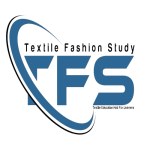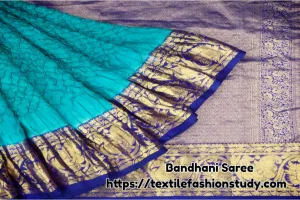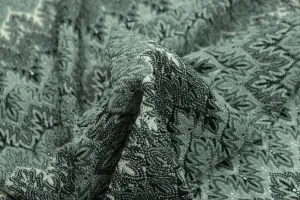Table of Contents
Denim Fabric Shade Checking
The denim fabric shade-checking procedure is important to ensure the shade of the denim fabric in each stage of production. Denim fabric is produced in different shades for its end-user demand. Shades of denim garments are checked in different stages of production. Denim is produced from 4 oz. to 16 oz./ sq. yds in weight. Technically Denim is defined as a 3/1 warp-faced twill but is also produced from weaves like Left-hand twill, right-hand twill, broken twill, cross hatches, cords, dobby’s, structures, etc.
Denim fabric is demandable in the modern era. Different types of denim fabrics are produced in the denim manufacturing mill. However, different types of shaded fabrics are produced by processing with different denim washes. As a result, it needs to ensure the shade of the denim fabric as per buyer requirements. Here, I like to present the denim fabric shade-checking procedure.

Denim Fabric Shade Checking Procedure
The shade-checking procedure is a step-by-step process. The following are the shade-checking stages of denim garment manufacturing. They are-
- Firstly, denim fabric rolls are kept in quarantine areas as per dye lots, whether fabrics are in-house from suppliers.
- Secondly, physical inventory of all fabric rolls is done according to and then kept in the rack.
- Thirdly, quality inspection is done and after passing this process, shade band and shade continuity report are made from all fabric rolls and then fabric rolls are kept shade-wise in the rack.
- After that, the store issues fabrics to the cutting section according to shade grouping and shrinkage reports.
- Additionally, in the cutting section shade, wise segregated rolls are received, checked, and proceed for cutting.
- After cutting, shade wise bundle will be kept in the sewing inputs area and shade labels must be attached to all garments in the sewing line.
- After completing the sewing operation, the garments are bundled shade-wise and will send to the washing factory.
- Hence, garments are received as per shade-wise bundle in the washing factory.
- After that, in the washing unit, the garments are sent to the dry process.
- After the dry process, garments are sent to the first wash.
- After completing the first wash, the garments are sent for destruction/ PP.
- Then, the garments are segregated shade-wise and sent to a second wash.
- Afterward, the garment’s quality and measurements are checked in the finishing section.
- If the denim garment passes the quality check then the shade-wise bundle is sent to the delivery section of the washing factory.
- After washing, the denim garments are received in the finishing section as shade-wise bundles.
- The denim garments shades are segregated in the shaded box, in the finishing input area.
- However, complete denim garments are sent to CTPAT according to shade labels after finishing.
- Basically, the denim garments shades are checked as per packing ratio to maintain 1carton 1 shade, after the metal pass.
- After that, the denim garments are kept in cartons, and the shade labels must be removed from the garments before keeping them in the cartoon.
- Then, cartons are sent to the carton warehouse with proper identification.
- Finally, keep it in a warehouse waiting for the Inspection.
In sum, the above procedure is maintained for denim garment manufacturing. However, denim fabrics out looking depend on an accurate step-by-step process. Most of the cases, denim washing has a great impact on the shade of the denim fabric. The washing personnel should be careful about the application of the denim washing chemical during the washing process. A shade will come out by the proper application of the washing chemical.





